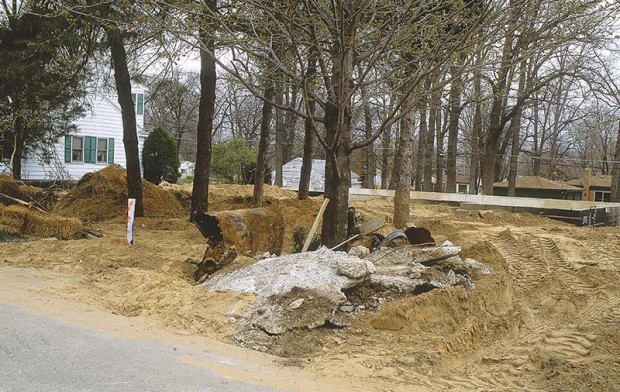
Here are tips to help you preserve your landscape during a remodeling or construction project
People are digging in these days.Not digging into the soil to make a garden, but digging in on their property to improve it by adding on or remodeling their homes. Ironically, this often increases the property value in one way while reducing it in another, unexpected way.
I’m talking about established trees and landscapes, overlooked assets that are often lost during and after construction. Sometimes, the loss is unavoidable. Even if you wanted to preserve a particular tree or group of shrubs during the construction process, it might not be possible. More often, the loss is the result of oversight, ignorance or miscommunication.
The loss can be huge, in tangible and intangible forms. First, there’s resale value to consider. Surveys by realtor groups (involving photos of homes with and without trees and shrubs) asked how much prospective buyers would pay for the various properties. The surveys indicated that landscaping can add 20 percent to the value of a home. Greenery in general, but large trees especially, garnered positive responses.
Then there are living expenses and quality of life. Energy conservation studies have proven that shade trees can significantly reduce heating and cooling costs. Environmental research concludes that established plants can cut noise levels and improve air quality, with attendant reduction in medical costs and stress-related illness for residents. And although numbers may never be able to convey the value of peace of mind, a majority of people agree that it comes in increasing amounts with beautiful surroundings filled with butterflies and birdsong.
Finally, communities lose when landscapes are degraded by construction. Many cities and regional authorities are dedicating public funds to the quest for cleaner water and lower water treatment costs. Such campaigns focus on educating the public about how actively growing, diverse plantings promote water quality by intercepting, holding and biologically filtering rain that would otherwise pick up pollutants as it runs along pavement and hard-packed soil.
It’s in your best interest to hold onto both the direct and indirect returns your landscape provides. Building professionals are not skilled in tree and landscape preservation. If you’re planning to build onto your home or remodel, or you aim to build new and want to keep all or part of the landscape, you must learn how to be an effective advocate for your trees and other greenery.
There are five points in the construction process when you should think and act to preserve your landscape. When you first consider construction, at your first serious meeting with a building contractor, just before construction begins, during the work and after the building project is complete, there are things you should know and do.

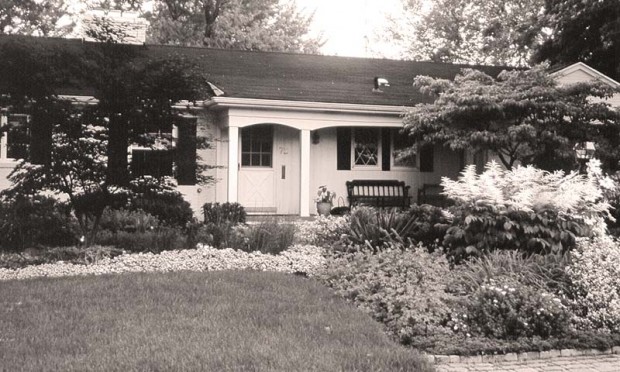
When you first consider construction
Your role as a landscape advocate begins when you first consider adding on, remodeling or building new. Begin by identifying “must save” plants. Then hire an arborist and/or a horticulturist, or train yourself to evaluate the health and replacement cost of those trees as well as the adaptability and moveability of shrubs and smaller plants. Get a written estimate of the replacement value of plants and detailed plans for protection and after care. It’s an invaluable item, both for your consideration as you weigh construction options and costs, and as a means to increase builders’ awareness and respect for the landscape.
You or your arborist/horticulturist consultant should also prepare a map of your property that shows the location and extent of the root zones of plants to be saved. You’ll use this to direct construction traffic and deploy protection for these invisible, surprisingly fragile and irreplaceable elements of your landscape.
Pamper “keeper” plants right from the start. Don’t wait until the plant has been damaged—for some damage is almost inevitable during construction. Fertilize your plants and begin or maintain a good watering program to build their stamina.
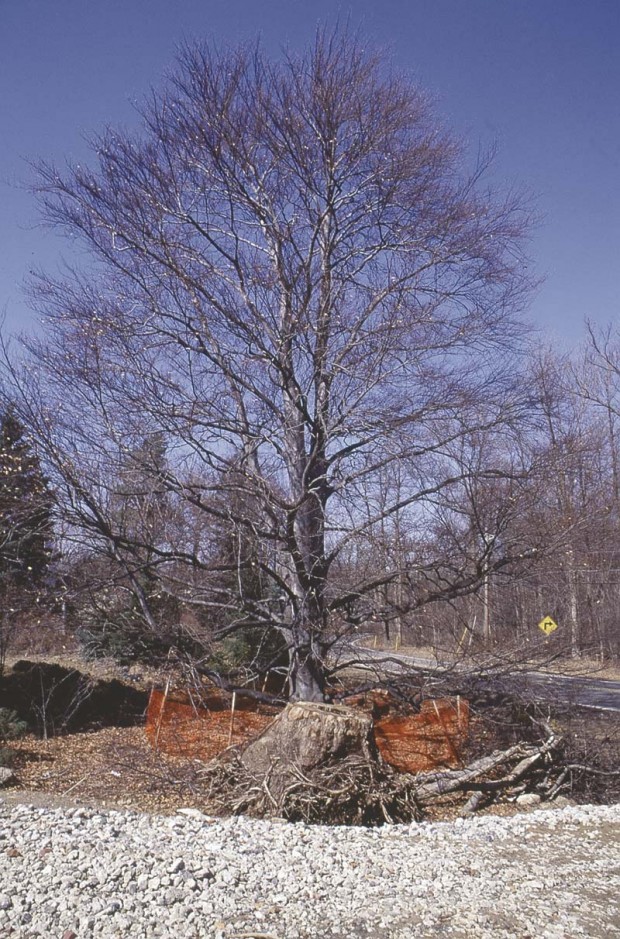
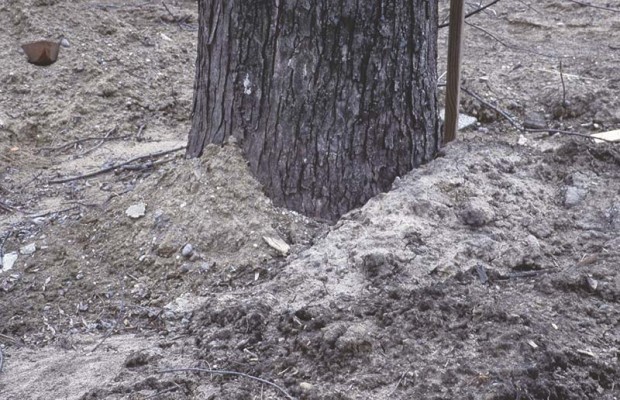
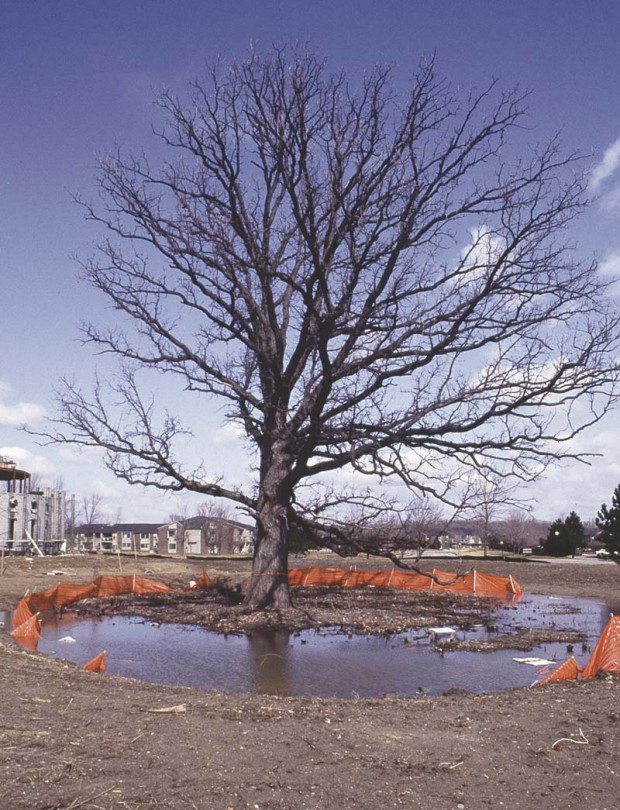
At the first planning meeting with your builder or work crew
Identify and stake out the exact placement of new buildings or structures. Determine where the grade will change and how much, whether it will be built up or cut away. Discuss all trenching and excavating ahead of time, in detail. You and your landscape experts need this information to plan specific protective measures and negotiate changes in building plans.
List all work functions that will take place on your property and where each will occur, including material storage, fuel storage, parking areas and places where paint and concrete will be mixed or dumped. Compare this to your keeper plant list and root zone map.
Plan a mutually agreeable vehicle and equipment route into the work area. Aim for a straight route, since every turn of equipment means more churning of soil and increased risk of scrapes and bumps to nearby plants. Allow for a track at least eight feet wide, as anything less represents an unreasonable expectation.
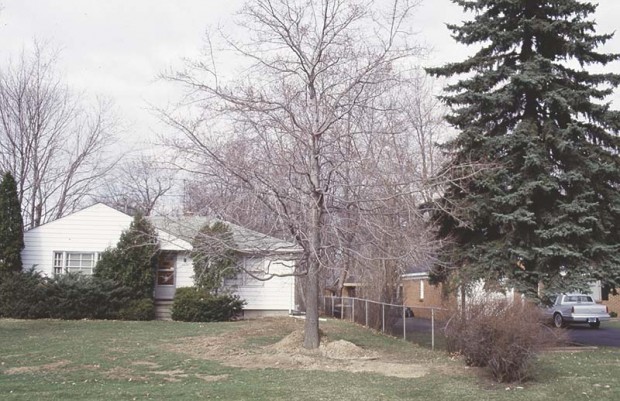
plants. Help your builder understand the effects and explore options. A trench for utility lines detoured around this oak, unfortunately, cutting through at least half of the roots along the outer edge of the circular root zone.
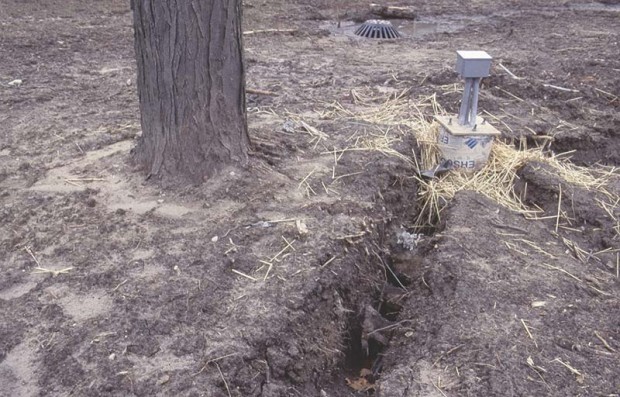
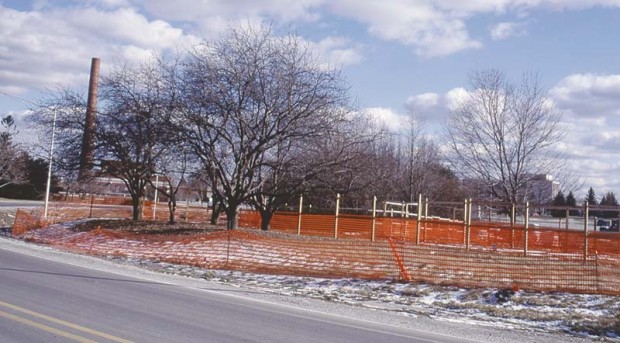
Now you may have to modify your “keeper plant” list. Be realistic. You may have to change some plants’ status from “keeper” to “remove,” “move to save,” “keep but cut back,” “tie back,” etc. Then, for every plant that remains on the list, plan ways to protect not only the visible parts but the soil and roots. An eight-inch depth of mulch has been proven to be more effective in protecting the soil from compaction and roots from crushing than any other construction site device, including heavy plywood “paving.” Discuss this with the builder along with tarp coverage beneath material storage areas and where falling debris is expected, and where you will accept the greater cost but lesser damage to plants that comes from drilling beneath root zones rather than trenching through them.
Finally, before any work begins, discuss and list who will be responsible for plant removals and obtaining necessary permits (many communities require tree removal permits). Establish who will execute plant moves, when they will be done and how all parties will know that the involved areas are “all clear.” List, too, who will be in charge of putting up and maintaining protective fencing and padding, creating the cushioned vehicle and equipment route, and explaining all of these features and their importance to workers. Expect to be an active player throughout construction.
When construction is about to begin
Now it’s time to move, elevate or cap sprinklers, prune or tie back at-risk trees and shrubs, prepare the vehicle route and place fences and protective devices.
On the access route, peg down landscape fabric first. Its presence will confirm the original grade when it comes time for clean-up. Have eight inches of mulch dumped on the route, beginning at the entrance with successive truckloads rolling over already-mulched ground.
Place fences and barriers. Keep two things in mind as you do this. One, if there is space, workers will use it. Two, people need room to work. It’s true that work expands to fit the available space, so barriers are necessary, but they must not hamper the work.
Post signs, even if you feel they are redundant or obvious. “Fuel storage,” “dump excess concrete here,” “stay out, loose soil” are some messages you want to communicate clearly.
Expect to pay extra to protect plants and soil. The construction industry is not aware of its full impact on plants, does not go back to see the consequences years later, and has not been asked to consider the cost of effective protection in its estimates. So be prepared to buy or pay extra for tarps to cover paint mixing areas, “bulldog” type porous tarps to protect shrubs from falling debris or paint, and increased labor to carry in rather than truck certain materials across the soil.
During construction
Your most important act during construction is to stay involved. Many gardeners have described how they felt the need to detach themselves, to avoid looking at what was happening in their yard, and afterward go through a process of reclaiming the space. This is understandable but precisely the wrong thing to do.
Get out there, every day, to see what’s happening, to communicate with the workers and to tend to your plants, which cannot detach themselves. Be ready to prune off broken branches as soon as the damage happens, move fences to enlarge or reconfigure protected areas, add mulch or tarps, etc.
Stand up for your plants. You are the expert when it comes to their needs and condition. Do whatever you must to maintain the protection you intended and to continue watering and other essentials during construction.
At this point you should recognize that there is a language barrier between gardeners and builders, and compensate for it. Even simple terms like “soil” have different meanings to both, leading to variable interpretations of acceptable quality and density. A concept such as “root zone” may be incomprehensible to a carpentry crew, or exist in an altered state in their minds so that any conversation that involves the term must be confirmed with diagrams and clarifying questions, just as “load bearing wall” may be Greek to you until it’s drawn out. Although there are individuals fluent in both “gardenerese” and “contractorese,” you should assume until proven wrong that everything you say can and will be misinterpreted.
I’ve been admonished, in preparing this material, to prepare myself for righteous anger from those in construction fields, who may think that in speaking of all a homeowner must do to protect their landscape I am belittling the skills construction workers have and their sense of responsibility. I hope that I’m making it clear that I do respect skilled and responsible construction workers but at the same time I know that my expertise and that of any gardener deserves as much respect. We are expert in our differing disciplines and when we share the same ground, we must communicate carefully. That begins with respect, extends through explanations of technical terms on both sides, and is never hurt by a few shared cold lemonades on a hot day.
After construction ends
Inspect your plants and the soil for damage. Photograph the plants. These images may be invaluable as benchmarks to assess their recovery.
Make your landscape a garden once more. Remove the excess mulch, landscape fabric, protective fencing and tarps. Aerate the soil. Check that sprinklers are working, and make necessary repairs and adjustments. Untie tied-back plants, bring back temporarily relocated plants, and add new plants.
Watch for signs of stress. These signs may not show up right away—in fact, symptoms of stress may not show up for months or a year in larger plants. The bigger the plant, the longer you may have to keep it under watch.
Give stressed plants kid-glove treatment. Watering is the most important thing you can do, but special fertilizing, pruning and patrolling for particular pests that prey on weakened plants of that type may be in order too. Follow the plan that you made for the plant or had made way back in phase one. It all comes together now, when you see your plants resume the growth rates and beauty they possessed before you were possessed by the construction bug.

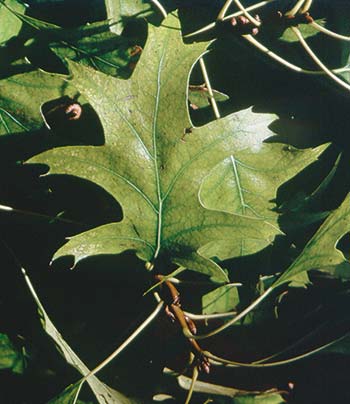
Watching for signs of stress after construction
Symptoms may be immediate or delayed:
- Wilting or shedding of foliage during or right after construction.
- Development of early fall color or leaves dropping early that season or the season following construction.
- Reduced leaf size and shoot growth the next season or later.
- Twig or branch loss the next season or later. More needles may drop than are produced on an evergreen. The plant may appear thinner,more transparent.
- General growth, appearance and pest resistance may be poor, and secondary problems may appear.
Helping the plant recover
- From April through November, water deep and slow throughout the plant’s entire root zone whenever the soil a few inches deep is dry and warm.
- Check root growth (dig test hole at drip line) and resumption of pre-construction twig growth rate to determine when the plant has fully recovered.
- For every inch of trunk diameter, expect a one-year lag before regular growth resumes.
Article by Janet Macunovich and photos by Steven Nikkila, www.gardenatoz.com.

Geraldine F. Habitz says
I sure wish I could have saved a mock fruit tree I had in my back yard. It added so much: shade, beautiful blooms, and made the whole back yard a pleasant picture. It also provided nice shade for my two dogs. After three years of trying to save it from a windblown rust, I had to give up and cut it down. It would bud, leaf, bloom and then the leaves would wither and fall. I sprayed it all over for three years but was broken-hearted when that didn’t stop it from dying. Its roots were a problem, as every summer I had to have the sewer lines cleaned because my basement would back up. I find that I cannot plant another tree because of those sewer lines that run straight back from my house to the alley. I was told that I could have 4″ pvc pipe inserted into the line, but it seemed too expensive. Sewers here are about 80 years old and many people complain of broken crocks and flooding basements. I’m behind the eight ball and very sad. I enjoy getting the Michigan Gardener.
jhofley says
Geraldine – Thanks so much for reading and hang in there, you are not alone in the joys and challenges of gardening! -Jonathon